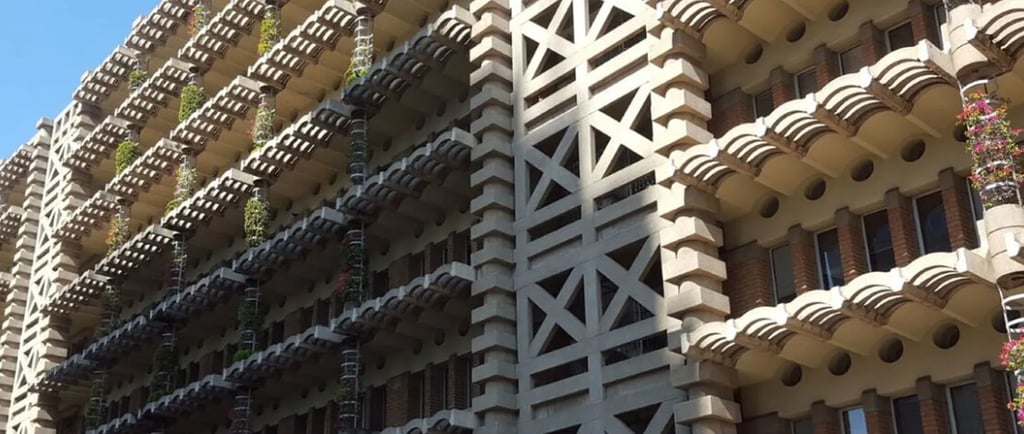Biomimicry For Brisbane: Architecture That Learns From Nature
This piece explores how nature can guide us toward smarter, more resilient architecture. From termite mounds to subtropical tree canopies, there’s so much we can learn if we’re paying attention.
5/1/20252 min read


Biomimicry For Brisbane: Architecture That Learns From Nature
Our buildings should emulate nature, not merely reflect human industry. Architecture must learn from life if we are serious about climate resilience. The built environment now contributes nearly 10 gigatonnes of CO₂ emissions globally, and in Australia, commercial buildings alone consume about 24% of the nation’s electricity. In a city like Brisbane—with humid summers, mild winters, and subtropical rainfall patterns—ignoring nature's lessons is a missed opportunity. Brisbane City Council's "Buildings that Breathe" guide even urges development to respond to the local climate and lifestyle.
Biomimicry, the practice of drawing inspiration from natural systems, offers a practical pathway. A widely cited example is the Eastgate Centre in Harare, Zimbabwe—a commercial building that mimics termite mounds in its passive cooling system. This structure uses brick chimneys and concrete fins to regulate internal temperature by circulating air based on thermal gradients. Eastgate uses about 90% less energy for ventilation than conventional buildings of its size and approximately 35% less total energy. It also saved around 10% in construction costs by omitting a large HVAC plant.
These principles are applicable in Brisbane, with adjustments for our specific climate. Architectural responses here already include wide eaves, operable louvres, and breezeways designed to encourage cross-ventilation. Strategies such as thermal mass, night flushing, stack ventilation, and shading devices can be informed by both termite architecture and subtropical flora. In one local pilot, introducing vertical ventilation shafts inspired by termite mounds helped reduce peak indoor temperatures by 3–5°C during summer afternoons.
Practical Applications in Brisbane:
Passive Cooling: Mimicking termite mound airflow systems can reduce reliance on mechanical HVAC. Stack ventilation and chimney effects are increasingly being integrated into commercial and educational buildings.
Thermal Mass: Heavy construction materials can absorb daytime heat and release it overnight, supporting thermal comfort.
Shading and Envelope Design: Facades designed to mimic leaf canopies or cactus skins can reduce solar heat gain and enhance thermal performance.
Challenges:
Despite its promise, biomimicry faces institutional and financial barriers. Conventional design practices are still dominant, and many clients prefer established solutions like mechanical air-conditioning. Regulatory frameworks may not fully accommodate unconventional passive systems. Additionally, while upfront costs for passive systems can be modest, their payback periods and operational benefits must be clearly communicated to investors.
Nevertheless, growing demand for sustainable development—driven by regulation, tenant expectations, and certification schemes like Green Star and NABERS—is shifting attitudes. Biomimetic strategies not only reduce emissions and operational costs, they also contribute to occupant wellbeing and market appeal.
Takeaways:
Start small: Introduce biomimicry principles into retrofits or new homes.
Communicate clearly: Use data to quantify energy and cost savings.
Collaborate: Work with engineers, ecologists, and community groups to refine and validate ideas.
Stay informed: Engage with the latest research and case studies to keep learning.
Brisbane is well-positioned to lead in climate-responsive architecture. Our subtropical conditions and diverse ecology offer a rich palette of strategies to draw from. By listening to nature and applying its lessons thoughtfully, we can create buildings that breathe, perform, and inspire.
If you're a developer, builder, or homeowner looking to integrate climate-responsive strategies into your next project, Wigwam Architects would love to help. Reach out through the form below.
References: World Economic Forum (global CO₂ emissions), Australian Government commercial building statistics, Eastgate Centre performance studies, Brisbane City Council design guidelines.


